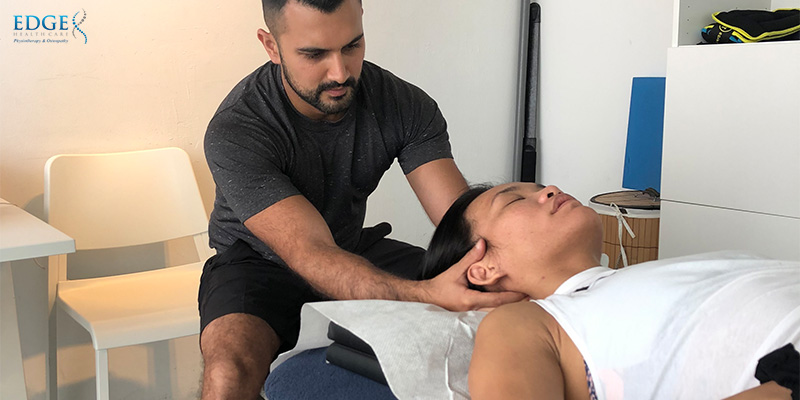It can be confusing for first-time patients to choose the services of a physiotherapist or an osteopath in Singapore. Read on to learn more about their differences as well as the treatments they use to promote effective recovery and health in patients

Focus
Physiotherapists in Singapore restore the movement and function of patients affected by injury, pain, illness, or disability. While chiefly focusing on the musculoskeletal system, physiotherapy also treats numerous conditions such as neurological, cardiovascular, respiratory, and nervous. In addition to reducing pain and aches, physiotherapists focus on rehabilitation and injury prevention to reduce the likelihood of patients experiencing recurring injuries in the affected area. Physiotherapists also frequently have their own specialities; such as sports physiotherapy to treat athletes’ injuries and help them return to form and training intensity, and paediatric physiotherapy to help infants and young children recover from health problems and develop healthily.
Osteopathy in Singapore focuses on manipulating the musculoskeletal framework to improve health across the body, such as the nervous, circulatory, and lymphatic systems; ensuring that patients’ bones, muscles, ligaments, and connective tissue function smoothly as one. Osteopaths treat a wide range of ailments such as joint, back, and neck pain, to migraines and headaches as well as pain related to work and pregnancy. They also treat a variety of sports injuries and will incorporate exercises both for management and prevention as part of their treatment. Osteopaths also specialise in various fields, such as cranial osteopathy which focuses on applying soft manipulative pressure to the head and spine to relieve tension and reduce stress; and visceral osteopathy which focuses on manual therapy of the organs to address issues such as constipation and acid reflux.
Training
Physiotherapists in Singapore are required to be licensed by Singapore’s Allied Health Professions Council and the Ministry of Health, ensuring high standards of professionalism. In addition, they undergo studies where they learn how to assess, diagnose, and treat their patients, as well as how to consider patients’ holistic wellbeing. Edge Healthcare’s experienced team of physiotherapists have attained their degrees from established universities abroad, with some attaining first-class honours as well as having research papers published in reputable scientific journals.
To practice osteopathy in Singapore, osteopaths must be registered with a recognised governing body from their country of qualification such as the General Osteopathic Council (UK). They undergo 4 years of extensive studies as part of their osteopathy degree. In the course of their studies, they learn about the anatomy and physiology of human bodies, how to properly diagnose and apply appropriate osteopathic techniques, as well as about biomechanics and nutrition. This allows them to create personalised treatment plans and utilise an evidence-based approach to adapt treatments based on each patient’s response to them.
Treatments
Physiotherapists in Singapore utilise a range of treatments such as manual therapy, education, and strengthening exercises to help patients recover and promote their healthy living. Manual therapy includes techniques such as soft tissue mobilisation, strain-counterstrain, joint mobilisation, and muscle energy techniques to relieve pain while improving range of motion and circulation. In addition, they also educate patients on strengthening exercises they can do at home, facilitating their recovery outside treatment sessions via a tailor-made treatment plan that considers each patient’s personal ability to achieve their recovery goals.
Osteopaths also treat conditions using manual therapy and exercise prescription, but may also use manipulative therapy and dry needling. Osteopathic manipulative therapy has osteopaths in Singapore use their hands to apply gentle pressure and manipulate muscles, soft tissues, and joints to align and balance patients’ bodies. High velocity thrusts (HVTs) can also be used to effectively manipulate joints. This may create a ‘cracking’ sound in the joints which is just a release of air. Dry needling involves a fine needle inserted into myofascial trigger points in the skin or muscle, alleviating pain and restoring muscle activation and strength. Soft tissue therapy massages muscles, tendons, and ligaments to alleviate pain and improve muscle flexibility and strength. Similarly to physiotherapists, osteopaths also conduct tailor-made treatment plans to best promote their patients’ recovery and wellbeing.
Looking for quality physiotherapy or osteopathy in Singapore? Visit our website to find out more about our rates and services.

